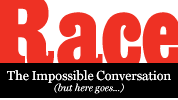It’s been six months since transitioning from the classroom to administration, and its been a welcomed challenge. One of my responsibilities as the Director of School Culture is providing training for teachers on culturally relevant pedagogy. As a nation, we lack the ability to address race responsibly, and this is also terribly true in the field of education.
Brown and Black students make up 50% of students enrolled in public schools, while more than 80% of teachers are white (National Study for Education Statistics). The culture gap is intense, and while some people try to act like it doesn’t matter (kids are kids, right?), some folks are trying to respond to the varying cultures that coexist within the classroom, and the disconnections that take place because the cultural differences aren’t usually addressed. I’m one of the educators trying to address the culture gap, and I’m currently doing so with the teachers I work with. While I love this work, am dedicated to this work, and predict it will be a part of my work for a long time, it’s also difficult, and, takes a lot of work. Discussing race is provocative enough to elicit interest, but can also cause a lot of discomfort for people who aren’t willing to go THERE.

As a teacher, when I’d describe someone as white or Black for the first time, my students would perk up, and without a doubt, someone would say “oooooh that’s raaaacciiiiist.” Of course, I’d unpack that statement, and by the end of the year, we had a shared lexicon when addressing race, but I was always surprised that my nine and ten year olds had already learned to be uncomfortable when simply describing someone’s race.
I experience similar reactions when discussing race with adults. I think this is because of two reasons:
1. Most of us haven’t been supported with how to discuss race responsibly and authentically (political correctness has altered our authentic voice).
2. Because of America’s history, discussing race requires that we go THERE, and going THERE is not always a welcomed destination.
Where is THERE, you ask? You know, THERE—that frightening place where we must confront, own, and shift our own biases. Whether you have a nuanced perspective on the politics of race, or have never thought about race, going THERE with a mixed group of people with different perspectives on and experiences with race is tough. Going THERE may result in people feeling uncomfortable at best, but defensive and angry at worst. I say uncomfortable at best, because even if discomfort isn’t an easy feeling to sit in, it is a learning feeling. When we’re most uncomfortable, we’re experiencing the potential to learn, and, hopefully, shift our practice.
Discomfort, however, must be followed with reflection. Otherwise we fall into simply feeling uncomfortable and defensive, and those feelings don’t shift perspectives. When I’m most uncomfortable, I try to question my discomfort and dig deeper- why am I feeling uncomfortable? Do I feel uneasy because I need to confront and/or change something within myself? Am I uncomfortable due to my own ignorance on something? It takes work to go THERE with yourself, but if we don’t, we rob ourselves from the potential to grow.
So…. I’ve been going THERE with teachers, and it has been a challenge that I’m trying to welcome with open arms. I was first met with eagerness. Immediately, teachers acknowledged the existing culture gap, and agreed that it needed to be discussed and dealt with. But, during our last meeting, things got real, which means things got uncomfortable. I think some people were frustrated, definitely defensive, and I felt bad. The training was planned in a way that caused deep self-reflection, and it didn’t feel great for some people. I felt uncomfortable for putting teachers in that position, but, in reflection, I know it needed to happen. I’ve been a part of this work before, I’ve led this work before, and it’s never been neat. It’s messy, emotional, and intense. But these are the necessary emotions that come with the work of going THERE.
